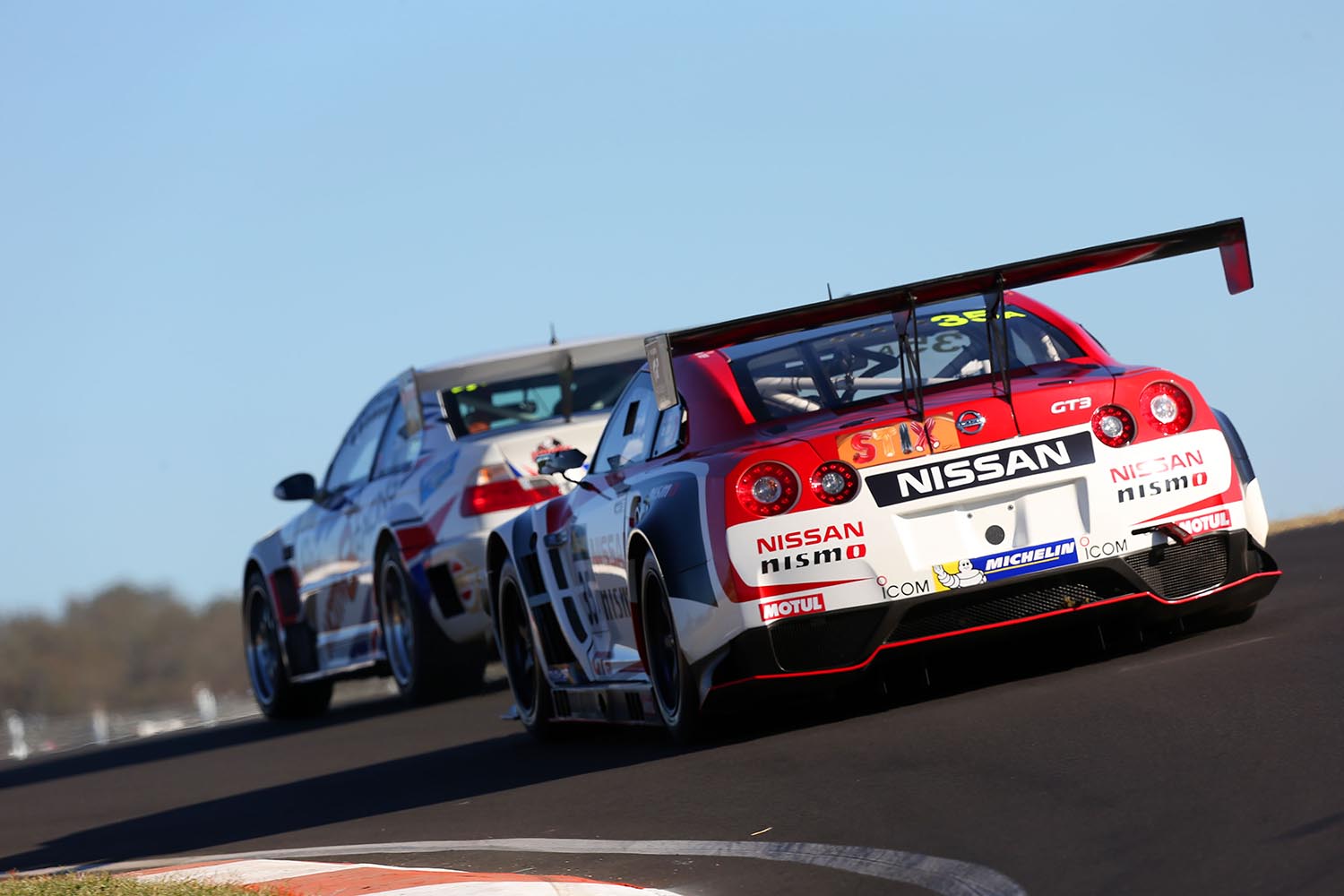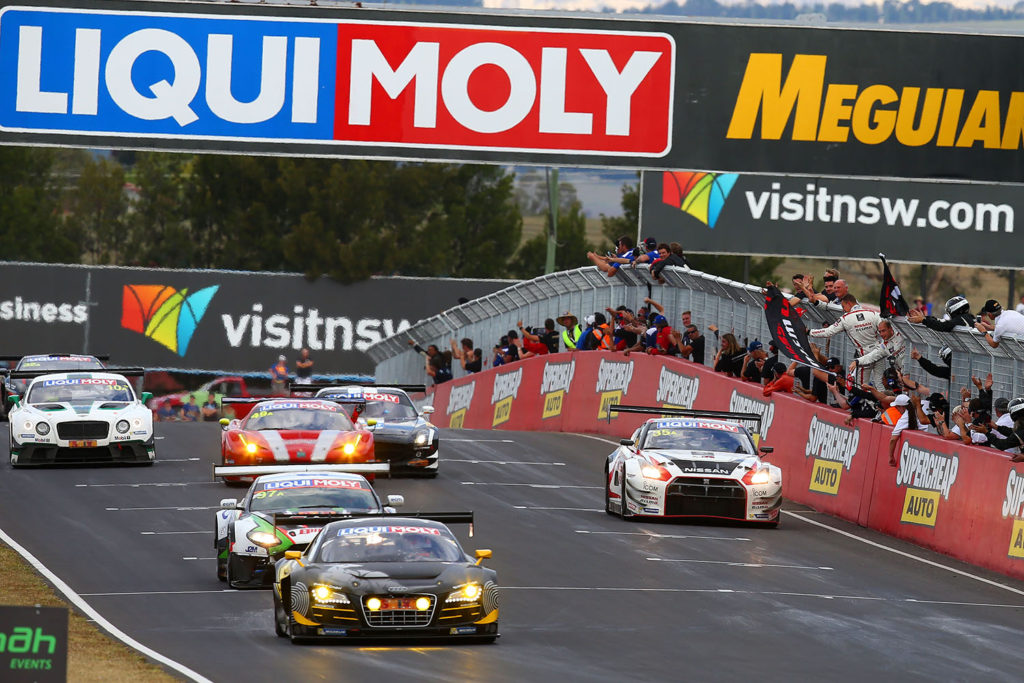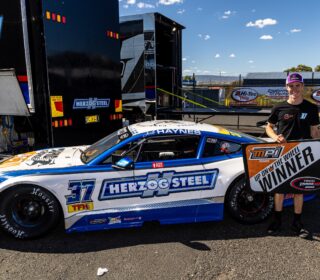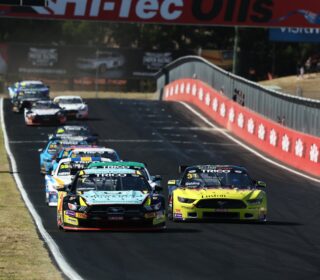SUPERCARS, GT AND THE 12 HOUR SPLIT – PART 2

WITH THE sport divided, the 2015 Bathurst 12 Hour was run under the constant cloud of the Supercars test happening little more than two hours down the road. And yet, it would prove to be a memorable weekend for more reasons than that, as Lewis Isaacs recounts for The Race Torque.
WORDS: Lewis Isaacs IMAGES: Nathan Wong
On the weekend of February 7-8 2015, Australian motorsport was divided.
A mandatory V8 Supercars test day was held at Sydney Motorsport Park and broadcast on Fox Sports. Three hours away, a field of 53 cars had entered the Bathurst 12 Hour.
You can recount the entire journey to this point in part one of the story, by clicking here.
Working for Auto Action at the time, I pulled rank when it came to working out where I wanted to be. My colleagues at Top Gear Australia magazine (RIP) were kind enough to loan me a car, and after working through the traffic of Parramatta Road and onto the motorway heading west, I breezed past Eastern Creek and continued towards the Blue Mountains.
As the cliche goes, Bathurst was calling.

In the days leading up to the Bathurst 12 Hour, the manufacturer influence is growing. Audi puts on a do in the city with its drivers where my editor at Auto Action, Rob Margeit, takes the free breakfast. I instead head to Pyrmont later for a lunch with Nissan.
Over the kind of food that is usually beyond the realms of most journos (especially those in print in 2015), a group of us get to know Nissan’s line-up.
Katsumasa Chiyo is quiet, polite, reserved and friendly all-in-one. Wolfgang Reip, and Florian Strauss (a late call-up to replace Alex Buncombe was on holiday in Thailand when he was told to head down under) had come from Nissan’s GT Academy gaming program. Though talented behind the wheel, they’re still somewhat awed to be in their position when years earlier, they were investing their time on Playstations. They’re equally unassuming and humble when outside the car.
The full story of the last decade of Australia’s International Enduro, the Bathurst 12 Hour, has been documented in a new book called ‘Going Global’. It’s available now by clicking here!
It’s a good day out and a reminder of the immense privilege covering motorsport sometimes offers.
When I arrive at Bathurst, I’m fortunate enough to be staying in the Rydges at the track thanks to Audi. The previous year I was on the floor of a house with a host of other media types including The Race Torque editor Richard Craill. The year before that, another South Aussie, superstar salesman and Youtube hero Joseph Lenthall gave me a few square metres of the motel room he shared with his old man.
I don’t feel worthy.
When I’m chaperoned around the track in a road-going R8 by spaceman Felix Baumgartner, I am reminded why all the exhausting deadlines over the last few years are worth it.
On weekends like this, being a motorsport journo is the best job in the world.

Bathurst is a magnet for drama. Hollywood could set up an army of writers on top of the hill and they still couldn’t match the narratives the mountain offers.
The first plot twist arrives in Friday’s opening practice. Tony D’Alberto, in the Ferrari of reigning champions Maranello Motorsport, connects with a slow travelling Aston Martin. The ensuing accident wipes the car out and sends D’Alberto to Orange hospital. Maranello investigates sourcing a replacement car, but it’s soon realised the defending champions are out of the weekend after the first session.
Away from the track, a road crash injures four drivers from the Mobil 1 GT3 Endurance team in Class B.
The day ends with Christopher Mies’s Audi on top and a Bentley in need of repairs.
I go in search for dinner in the town that night and bump into Nissan’s drivers on a similar mission. There are no minders or team personnel, and they have no idea what they’re after. We settle on Church Bar for pizzas and share a sneaky beer or two for the Europeans. It’s not how I imagine race prep should go, but who am I to question the approach?
Saturday is a much calmer affair. Laurens Vanthoor put his Phoenix Racing Audi on pole with a blistering 2:02.55 second lap – smashing the qualifying lap record and going 0.6 seconds faster than David Russell in a Lamborghini Gallardo. Chiyo, who was second at one stage in qualifying, lost the rear of the factory GT-R and backed the car into The Cutting. Damage that initially looked superficial is worse than first thought. After a visit to the local mechanics, the car is repaired at 4:30AM, ready to race from third.
The pace and frenzy is an early warning of what’s to come on Sunday. And with everything happening at Bathurst, few people are thinking about what’s happening down the road in Sydney.

It’s never easy getting up before the sun. But with 50 cars set to start the race at 5:55 AM, sleeping in wasn’t an option either.
I’m lucky enough to get access to the grid, and then watch the start from turn one. While the field makes it through the opening laps, it isn’t long before the all-too-familiar kangaroos appear around the circuit, jumping in front of a Class D #42 BMW M3 and setting a high attrition rate.
At the front, Markus Winkelhock is doing an outstanding job in the lead Audi. He laps in the 2:05s in the dark and drops to a 2:03 .3091 when the sun rises and the temperatures stay low.
I am way too excited to see Winkelhock. See, I was there for his first and only F1 race. The one he led in a Spyker. The one with the turn one river that claimed about five cars. That 2007 European Grand Prix was one of the wettest moments in my life. Alonso passing Massa and Mark Webber nabbing a podium spot, is one of the best things I’ve seen at a track. These cars ruled. Anyway, for a brief moment, Winkelhock led that race by 33 seconds. He never raced F1 again.
Like he is some sort of Ironman, the German stays in the car for three hours. So does Wolfgang Reip. He reports he feels ill in the car. That there’s something up with his stomach. Somehow, it doesn’t affect his driving over the stint that is littered with Safety Cars as a Porsche 997 and the Quinn family McLaren retire.
The beauty of watching a race play out over 12 hours is how the strategy unfolds. The unfancied AF Corse leads for chunks. So does the Erebus Merc of Dean Canto, Jack Le Brocq and Richard Muscat.
This being Bathurst in February, the sun is offering some vicious heat and melanoma vibes. Smart teams are taking advantage of long Safety Car periods by putting in their lower-ranked drivers to rack up their time. Others are using the mid-day period to stretch rivals by upping the pace. In the brutal sun, Bentley’s Matt Bell somehow survives a two-hour stint in the heat without a drink bottle. He’s later brought back to life in the medical centre.
As the day goes on, Safety Cars breed Safety Cars. In one period the Kintyre Racing Audi TT rear-ends the Trofeo Motorsport Ferrari, ruining both their days.
Crashes continue and none are as massive as the new MARC Cars Mazda – which is making its debut in the race.
The race is becoming a heartbreaking and exhilarating spectacle to watch. And being at the track, listening to the particular grumble from the SLS and Bentley entries is special in itself.
It’s being there for those sights, sounds and drama that makes Bathurst Bathurst.
Beyond the carnage, some drivers begin to stand tall. Benny Simonsen, brother Allan, is doing an outstanding job in a Ferrari 458. Teenager Austin Cindric is equally impressive for Erebus.
There are tonnes of stories to report before the race even reaches its final hour.

Another great Bathurst cliche is the one about buying a ticket to the final hour. Nowhere is it truer than the 12 Hour.
In the race’s climax a factory Bentley, an Audi R8, a Nissan GT-R, an Erebus Mercedes and an Aston Martin arein contention. It’s all live on free-to-air. It’s a promoter’s dream.
A reanimated Matt Bell leads into the final hour for Bentley ahead of Vanthoor, Chiyo, Le Brocq and Stefan Mucke.
At 50 minutes, the safety car comes out for the sister Bentley, bunching the field again. Another Safety Car follows when David Brabham crashes an Australian-entered Bentley, removing the traffic between the leaders.
The clock is running down behind the Safety Car, leaving 15 minutes of racing. Vanthoor is pushing Bell, but the Bentley driver is defendig harder than Trevor Gillmeister at his peak. The pair are drawing all the attention, while behind them Chiyo clears the traffic to join the fight with 11 minutes to go.
The young Japanese driver is in no mood to waste time and attempts a move on Vanthoor on Mountain straight. He pulls up short, but before he can plot his next attempt the Class B leading Grove Racing Porsche is in the gravel.
Watching from the media centre, I can still remember commentator John Hindhaugh declaring ‘we’ve been robbed of the finish’.
The odds were stacked up against recovering the Grove car from the gravel at Murrays corner. But not all heroes in motorsport are in race suits. The recovery team sprint to pluck the car out, giving the world four minutes of racing.
The leaders are 1-2-3 in track position when the race restarts and Chiyo transforms in the car. The politeness makes way for a single focus of winning this race. You could put an army between him and the chequered flag and the odds would still be in his favour.
He stuns Vanthoor to take the Audi just after the start finish. He gets behind Bell on Mountain straight and makes his move before Griffins Bends.
He’s done two cars in two corners. It’s ruthless. Nissan, the company that pushed so hard to broker peace between the 12 Hours and Supercars is getting the ultimate vindication.
The last time a GT-R won at Bathurst fans booed. This time, Nissan gets to claim the moral victory and the race win.
Behind the GT-R, the race has more to deliver.
On the last lap, Mucke passes Vanthoor for third on Conrod – in a cruel result for a car that was quick all weekend. Only, Hell Corner would prove just that for Bentley. A rare Bell error opens the door for Mucke to get the Bentley. The commotion gives Vanthoor one shot to get them both, which he duly does for second. The cameras miss it.
It’s another unbelievable moment.
I had been lucky enough to cover the 1000 in from 2012-2014 and the 12 Hour the previous two years before this. But this whole experience was something else.

After all the ceremony, the podium and press conference, I get a word in with Chiyo. He’s quiet at the best of times, but after his effort and all the emotion, he picks his words in English carefully.
“I went here this time to get revenge, for sure,” he tells me. “The team trust me even if I crashed the car last year. Yesterday (in qualifying) I hit the wall as well.
“I wasn’t happy yesterday. The team did really hard work yesterday night and couldn’t sleep. That’s why I wanted to win. I wanted to present them the win.
“The last couple of laps I got some chance to catch the top. It was tough, but I could catch up because of the stong GT-R.
“It’s incredible.”
I’ll say.
Nissan Australia CEO Richard Emery betrays the emotion of the result. This is big for them on and off track.
“It’s not about being vindicated,” he says. “We were frustrated. Would we have liked to have to have had a different program here? Yes we would have. Circumstances were such that that wasn’t possible. We made the most of both weekends.”
The race is over, but now the work is beginning. I grab as many quotes as possible, gather some news stories and then get working.
Twelve hours of racing lead to more of writing before I know it, a new day is rolling over. My own race has started as I need to leave at 5AM to be back in Sydney for another long deadline day. I don’t know much sleep I’ve had over the last few days or when I’ll get to catch up.
It doesn’t matter.
Seeing Australian motorsport history unfold from the best seats in the house never really feels like work.
At this stage of my life, it’s still the best job in the world.
ABOUT: LEWIS ISAACS
Lewis Isaacs is a multimedia producer, editor, shooter and writer based in Sydney, Australia.
His media career began at ACP Magazines, writing for Auto Action, Rugby League Week, Top Gear and Motor. He has since developed as a digital and video producer, with his work featuring on The Guardian, SBS, The Sydney Morning Herald, ABC, Fox Sports and more.
For more information, please check out his website here.







